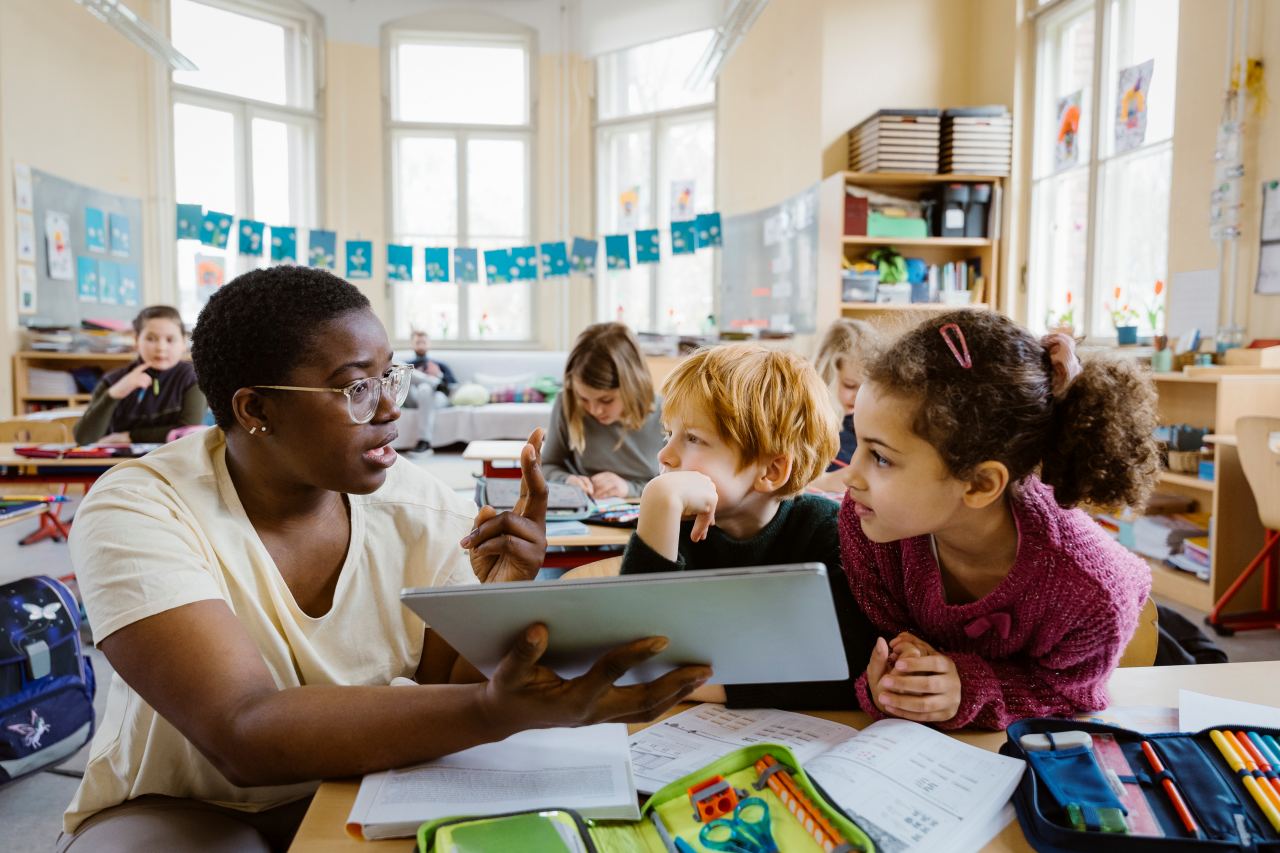Find the Best Primary Science Tuition Singapore for Enhanced Learning
Find the Best Primary Science Tuition Singapore for Enhanced Learning
Blog Article
A Comprehensive Overview to the Different Discovering Techniques in Primary Scientific Research Instruction
The exploration of varied discovering approaches in primary scientific research direction presents a possibility for instructors to boost pupil involvement and comprehension significantly. By examining hands-on understanding methods, inquiry-based strategies, and collaborative strategies, we can recognize reliable practices that provide to different learning designs.

Hands-On Learning Techniques
Hands-on learning strategies play a pivotal function in key scientific research guideline, engaging pupils in energetic exploration and testing. These approaches allow learners to connect straight with phenomena and materials, cultivating a deeper understanding of clinical concepts. By using manipulatives, versions, and real-life experiments, educators create an atmosphere where trainees can observe, hypothesize, and check their concepts.
Such strategies not only boost comprehension yet also grow critical thinking and analytic abilities. When students take part in activities like developing simple equipments, growing seeds, or conducting chemical responses, they are urged to ask questions and seek answers with their own monitorings. This experiential approach helps to debunk complicated scientific concepts, making them extra relatable and accessible.
Additionally, hands-on understanding promotes partnership amongst peers, as trainees usually operate in teams to perform experiments or share searchings for. This team effort not just enhances their knowing experience however also creates important social abilities. Ultimately, integrating hands-on techniques in key scientific research guideline cultivates a long-lasting love of understanding and interest regarding the environment, laying a solid structure for future scholastic searches in science and past.
Inquiry-Based Discovering
Inquiry-based discovering is a training method that encourages pupils to ask concerns, examine sensations, and build their own understanding of scientific concepts. This method shifts the emphasis from typical teacher-led direction to an extra student-centered experience, where learners take the campaign in their instructional journey. By cultivating inquisitiveness, inquiry-based understanding promotes deeper involvement with the material, permitting trainees to check out topics in a significant context.
In practice, this technique frequently involves hands-on experiments, observations, and important thinking tasks that line up very closely with the scientific approach. Trainees are encouraged to develop theories, layout investigations, and examine data, which cultivates essential abilities such as analytical and analytic thinking. The duty of the instructor in this framework is to assist in exploration, directing trainees with the questions process while urging independent idea and partnership.
Furthermore, inquiry-based knowing supports a feeling of ownership over the knowing process, inspiring trainees to go after knowledge actively. This technique not just improves understanding of scientific concepts but also promotes a lifelong love for discovering, furnishing pupils with the skills required to navigate an increasingly complicated world.
Collaborative Discovering Approaches
Collaborative knowing methods equip students to involve in purposeful interactions with peers, promoting a common responsibility for their educational results. In key science guideline, these techniques urge students to collaborate to discover clinical ideas, address problems, and carry out experiments (primary science tuition Singapore). By joining group activities, students can leverage diverse point of views, allowing for richer understanding and retention of scientific understanding
One trick facet of collaborative understanding is the focus official website on communication abilities. Trainees need to articulate their ideas, pay attention actively to others, and bargain ideas, all of which are crucial proficiencies in both academic and real-world contexts. This social interaction not only enhances their understanding of scientific principles however likewise promotes teamwork and dispute resolution skills.
Moreover, collective discovering often brings about increased inspiration and engagement. They are more most likely to take possession of their knowing trip when pupils see the value of their payments within a group. Teachers can facilitate this process by creating organized group tasks that line up with curriculum goals while providing advice on effective collaboration techniques. Generally, including collective learning techniques in primary science guideline grows a vibrant discovering atmosphere that prepares trainees for future scholastic and social obstacles.
Technology Combination in Science
The assimilation of technology in main scientific research instruction improves learning experiences by providing cutting-edge devices and sources that sustain various training methods, consisting of joint knowing - primary science tuition Singapore. Using digital systems, simulations, and interactive applications allows students to engage deeply with clinical ideas, promoting a more hands-on strategy to understanding
Digital labs, for example, enable students to carry out experiments securely and successfully, promoting inquiry-based learning. These tools can mimic real-world scientific circumstances, allowing students to visualize intricate processes that would be hard to replicate in a typical class setting. Innovation cultivates interaction and partnership among trainees, as they can share searchings for and function with each other on tasks via on the internet systems.
Additionally, multimedia presentations and instructional video clips can improve lessons by accommodating varied understanding styles, making abstract principles more easily accessible. Data analysis tools additionally empower trainees to gather and analyze scientific data, reinforcing vital believing skills. Overall, the critical unification of technology in key scientific research guideline not only enhances Full Report engagement yet also prepares students for a highly sophisticated society, outfitting them with crucial skills for future clinical undertakings.
Distinguished Instruction Approaches
Separated instruction strategies are essential for resolving the varied demands of learners in main science education and learning. These approaches allow educators to tailor their mentor methods to fit varying abilities, passions, and finding out styles within the class. By using set apart guideline, teachers can create an inclusive atmosphere that fosters interaction and boosts understanding of scientific ideas.
One reliable strategy is to make use of adaptable organizing, which allows pupils to work together with peers at comparable ability levels or with varying perspectives. This method urges peer understanding and promotes critical reasoning. In addition, offering choices in projects can equip trainees, allowing them to pick jobs that reverberate with their rate of interests while still meeting curricular goals.
Additionally, including tiered projects is an additional important method. By creating tasks with differing degrees of complexity, educators can ensure that all pupils are appropriately challenged, no matter of their proficiency. Making use of developmental evaluations to gauge comprehending more makes it possible for teachers to adjust their instructional techniques dynamically, ensuring that each learner receives the support they require.
Inevitably, applying distinguished guideline strategies in key science education and learning not just enhances trainee understanding results yet additionally cultivates an interest for useful link scientific research, preparing trainees for future scholastic pursuits.

Verdict
In recap, efficient main science direction necessitates a multifaceted technique that encompasses hands-on discovering, inquiry-based methods, and joint techniques. The combination of technology and separated direction better provides to diverse learning styles, fostering an environment helpful to exploration and essential reasoning. By executing these methods, instructors can boost trainee involvement and comprehension, ultimately nurturing a lifelong enthusiasm for scientific research and query. Such extensive methodologies are important for developing notified and interested future scientists.
The expedition of varied understanding approaches in main scientific research guideline presents a possibility for instructors to enhance trainee engagement and understanding significantly.Hands-on discovering techniques play a pivotal role in primary scientific research instruction, involving students in energetic expedition and testing.Inquiry-based learning is an instructional technique that encourages students to ask inquiries, examine phenomena, and create their own understanding of scientific principles.Joint discovering techniques encourage pupils to engage in purposeful interactions with peers, fostering a shared responsibility for their academic outcomes. On the whole, including collaborative understanding approaches in key science guideline cultivates a vibrant understanding setting that prepares students for future scholastic and social difficulties.
Report this page